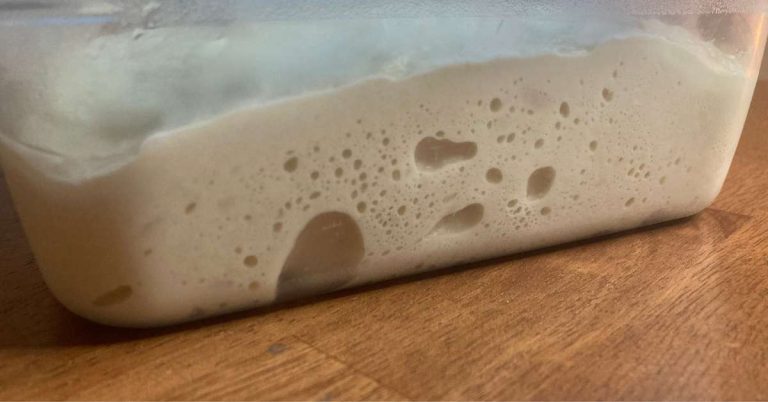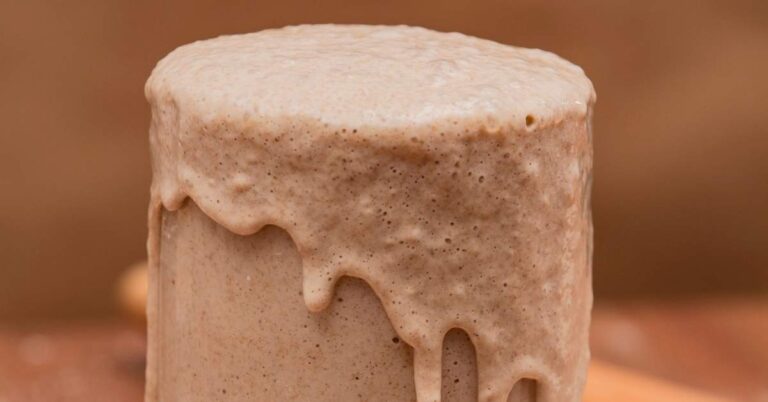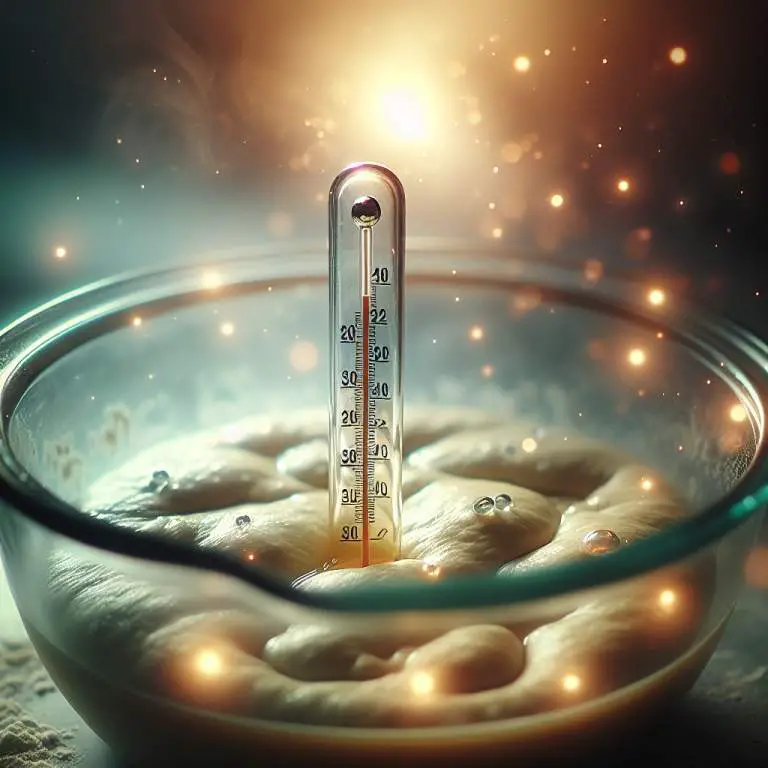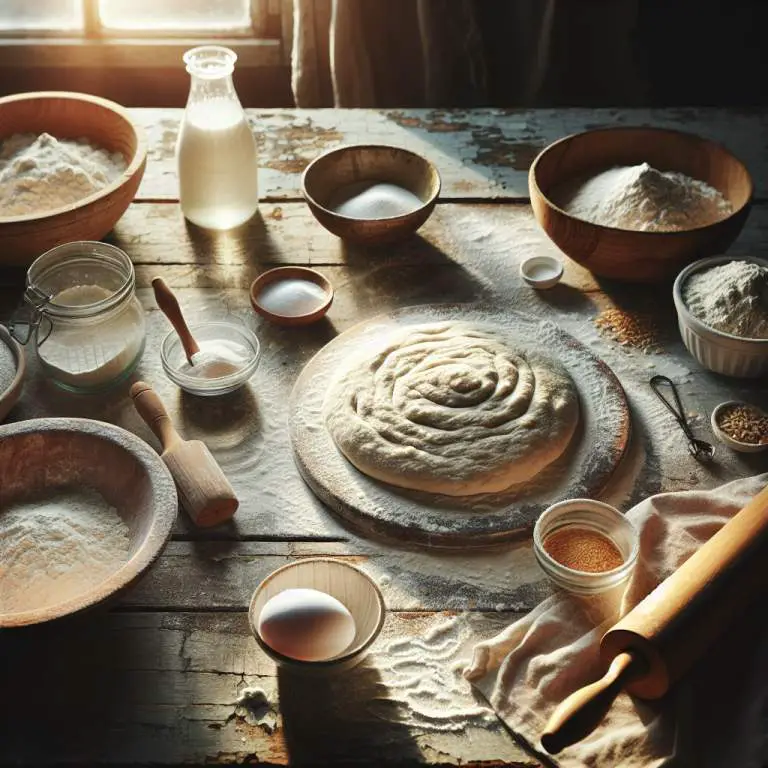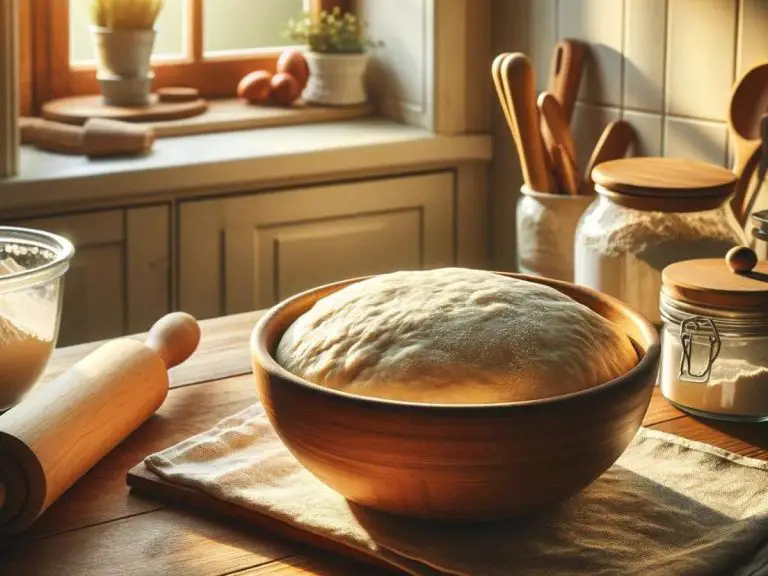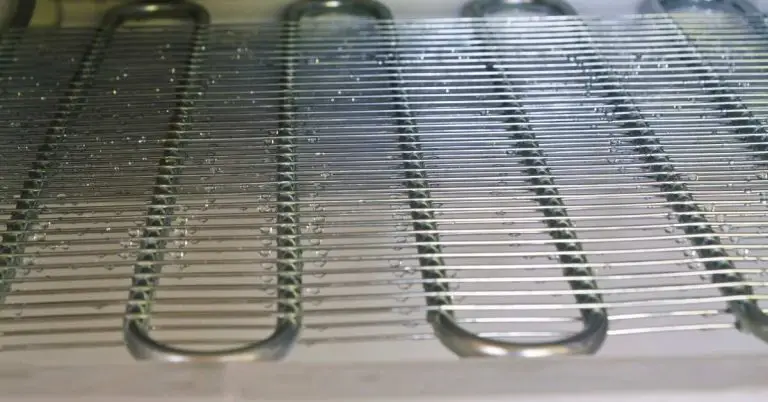How Can You Maximize the Flavor of Your Poolish Pizza Dough?
To maximize the flavor in poolish pizza dough, focus on the fermentation process. Extending the fermentation time allows for more complex flavor development, as the yeast slowly metabolizes the sugars in the flour. Experimenting with the proportions of ingredients and fermentation conditions can also enhance the dough’s taste and aroma.
A lot of what makes a good pizza taste so good has to do with the dough’s flavor. Let’s get into how a special technique called “poolish” can make all the difference in your pizza, and why paying attention to things like fermentation, flour type, and even the water you use can turn a good pizza into a great one.

Understanding Poolish
First off, what is poolish? It’s a type of pre-fermentation used in baking that’s quite simple but magical. It originated in Poland, which is how it got its name. By mixing flour, water, and a tiny bit of yeast and letting it sit before adding it to your dough, you create a base that’s full of flavor. This technique isn’t just for show; it has some real benefits for your pizza dough.
Using poolish makes your dough more flexible and easier to shape. It also adds a beautiful lightness and depth of flavor that you just can’t get from dough made right before baking. Imagine biting into a slice of pizza where the crust is just as memorable as the toppings. That’s what poolish can do.
The Role of Fermentation in Flavor Development
Now, let’s talk about fermentation. This is the process where yeast eats up sugars in the flour and releases gas, which makes the dough rise. But it’s not just about making the dough bigger. Fermentation is a flavor factory. It creates all these complex tastes and smells that can make your pizza dough go from bland to wow.
The longer your dough ferments, the more flavor it develops. That’s why using poolish is so smart. It gives your dough a head start on fermentation, leading to a crust that’s rich in taste, has a great texture, and smells amazing.
Selecting the Right Flour
Choosing the right flour is crucial for your poolish pizza dough. Not all flour is the same. For pizza dough, you want flour that’s strong enough to handle long fermentation times without getting too tough. This usually means using flour with a higher protein content. Protein in flour helps to build gluten, which gives your dough structure and chewiness.
But don’t just grab any high-protein flour off the shelf. You want to find a balance. Too much protein can make your dough too chewy, while not enough won’t give it the structure it needs. It’s all about finding that sweet spot for the perfect bite.
Water Quality and Temperature Control
Last but not least, let’s talk about water. The water you use and its temperature can have a big impact on your dough. The quality of water, meaning how hard or soft it is, can affect how your dough develops. Soft water is usually better for making poolish because it reacts better with the yeast and flour.
Temperature is also key. Too hot, and you might kill the yeast. Too cold, and the yeast won’t wake up and start working. You want your water to be just right, so it encourages the yeast to do its thing without rushing it. This helps your dough ferment at a steady pace, developing all those delicious flavors we’re after.
| Ingredient | Type | Impact on Fermentation | Taste Profile Enhancement |
|---|---|---|---|
| Flour | Base | Provides food for yeast, affecting rise and texture. | Whole grain flours add nutty and earthy flavors. |
| Yeast | Fermenting Agent | Speeds up fermentation, contributing to dough rise. | Fresh yeast can add a richer, deeper taste compared to dry. |
| Salt | Flavor/Control Agent | Regulates yeast activity, preventing over-fermentation. | Enhances overall flavor profile of the dough. |
| Sugar/Honey | Sweetener/Food for Yeast | Feeds yeast, accelerating fermentation and browning. | Adds sweetness and can influence crust color and texture. |
| Water/Milk | Hydrator | Affects hydration level, impacting yeast activity and dough consistency. | Milk adds richness and tenderizes the dough; water keeps it simple and traditional. |
| Fats (Butter/Oil) | Tenderizer/Flavor Enhancer | Can slow down fermentation but improves texture. | Adds flavor complexity; butter for richness, oil for moisture. |
Yeast: Fresh vs. Dry
When making pizza dough, the type of yeast you use can change the flavor. Fresh yeast and dry yeast do not make the dough taste the same. Fresh yeast, often used by professional bakers, gives a rich taste. Dry yeast, which is easier to find and store, can also make dough taste good but in a different way. For the best flavor, it’s important to know how much yeast to use. Too little or too much can affect the dough.
Salt’s Dual Role: Flavor Enhancer & Fermentation Regulator
Salt does two things in pizza dough. It makes the dough taste better and helps control how fast the dough ferments. Choosing the right kind of salt and using the right amount is key. You want enough salt to add flavor and help the yeast work right, but not so much that it stops the yeast from working. Finding this balance is important for tasty dough.
Incorporating Additional Flavors
You can add more flavors to your poolish pizza dough. Using things like preferments or sourdough starters with poolish can make the dough taste even better. You can also try adding herbs, oils, or malt extracts. These add-ins can make your pizza dough unique and delicious. It’s fun to try different flavors to see what you like best.
Longer Fermentation Periods
Letting your dough ferment for a longer time can make it taste better. You can do this by keeping the dough at a controlled temperature. Cold fermentation is one way to do this. It slows down the yeast but can make the dough develop deep, complex flavors. This takes more time but can make your pizza dough taste amazing.
Final Thoughts
To make your poolish pizza dough taste great, think about the yeast, salt, and extra flavors you use. Also, how long you let the dough ferment can change the flavor. Remember, making pizza dough is a mix of science and art. It’s good to follow these tips but also try your own ideas. This way, you can make pizza dough that you and others will love.


